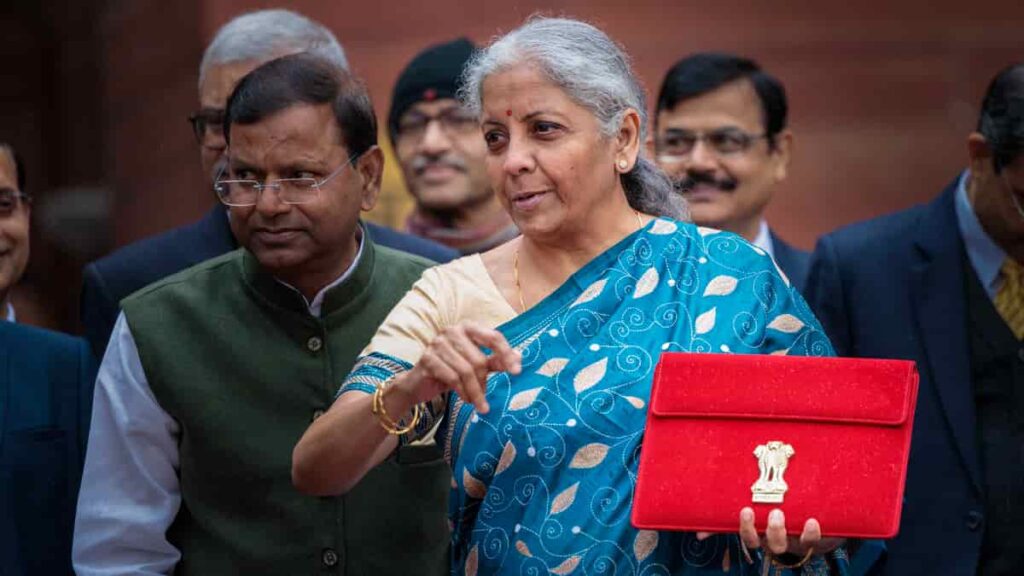Union Budget 2024-25: A Strategic Blueprint for India’s Future
As India braces itself for the announcement of the Union Budget for the fiscal year 2024-25 on July 23, 2024, experts and investors alike are speculating about the government’s long-term economic policies. The upcoming budget is expected to go far beyond mere fiscal numbers, serving as a comprehensive statement of the government’s vision for the nation’s economy leading up to 2047. This period marks the centenary of India’s independence, offering a crucial juncture to set the groundwork for the country’s economic trajectory.
According to a recent report by Goldman Sachs titled "India’s Fiscal Policy: Union Budget Preview: Beyond the Numbers," the budget will likely focus on several key areas including job creation, credit for Micro, Small, and Medium Enterprises (MSMEs), services exports, and domestic food supply chain and inventory management.
Emphasis on Food Supply Chain and Agriculture
One of the central themes identified by Goldman Sachs is the improvement of the domestic food supply chain to control price volatility. This could involve substantial investment in rural infrastructure to enhance connectivity, incentivizing domestic food production, and developing cold storage and food processing facilities. Such measures are crucial for stabilizing food prices and ensuring the reliability of supply, factors that significantly affect both urban and rural populations.
Job Creation through Manufacturing
Job creation remains a primary focus, particularly through labor-intensive manufacturing sectors like textiles, footwear, and toys. Integrating into Global Value Chains (GVCs) could prove beneficial, potentially making India a significant player in these sectors on the global stage. With the MSME sector producing approximately 30% of India’s output and employing over 120 million workers as of FY22, targeted support in the form of credit or fiscal incentives could further bolster this vital segment of the economy.
Skilling and Vocational Training
Another critical area is skilling and vocational training to support job creation. The government is expected to invest in vocational programs and on-the-job training, aligning the workforce’s skills with the evolving demands of various industries.
Services Exports and Technological Hubs
Services exports are also predicted to be a continued area of focus. The expansion of Global Capability Centres (GCCs), Global Technology Centres (GTCs), and Global Engineering Centres (GECs) will likely drive growth in this sector. These centres have already positioned India as a critical player in the global services market, and further development could consolidate this status.
Fiscal Responsibility and Welfare Spending
The Goldman Sachs report highlights a potential shift in fiscal policy, noting a growing expectation for some relaxation in the fiscal consolidation path and an increased focus on welfare spending. However, the report contends that given India’s high public debt, there is limited fiscal space to stimulate the economy substantially.
Despite these constraints, the government is expected to adhere to the announced fiscal deficit target of 5.1% of GDP for FY25, potentially even achieving a slightly lower figure with further consolidation aimed at reducing the deficit to below 4.5% of GDP by FY26. Even if welfare spending sees an uptick, it may not necessitate a reduction in capital expenditure (capex), thanks in part to higher-than-expected dividend transfers from the Reserve Bank of India (RBI).
Long-term Growth and Fiscal Policy
The general government’s budget indicates that interest expenses constitute a considerable share, at 5.4% of GDP, limiting the fiscal space for additional stimulus. According to Goldman Sachs, the central government’s fiscal policy has been a drag on growth since FY22 and is expected to continue this trend in FY25 and FY26. Nevertheless, the robust capex growth rate of 31% over FY21-24 has yielded positive spillovers for long-term growth.
Conclusion
The Union Budget 2024-25 is poised to be a landmark event that sets the stage for India’s economic policies leading up to 2047. By focusing on food supply chain improvements, job creation through manufacturing, vocational training, and continued emphasis on services exports, the government aims to create a resilient and dynamic economy. As fiscal consolidation remains a priority, the balance between welfare spending and capex will be crucial in shaping India’s economic future.
For more on MSME initiatives, visit MSME Official Website.
